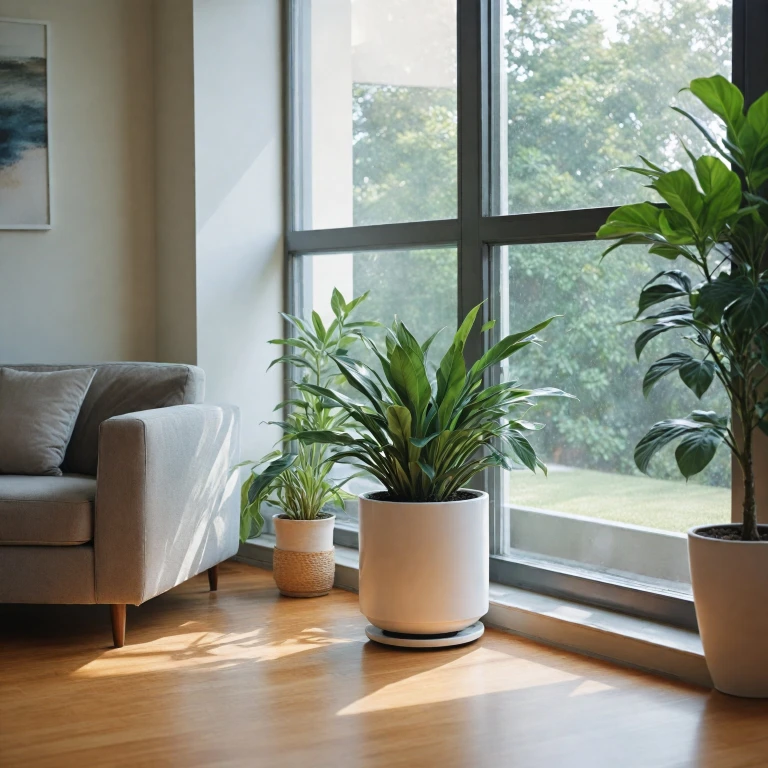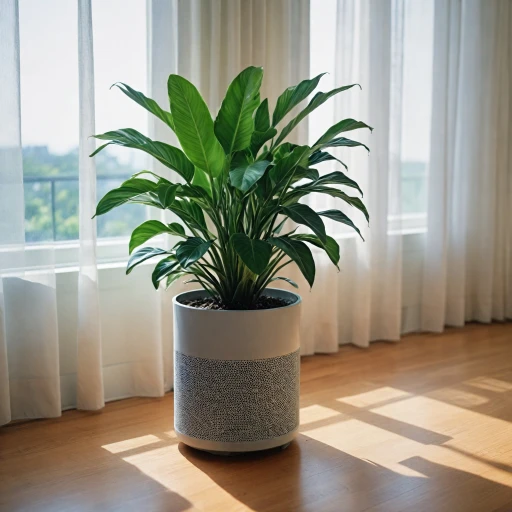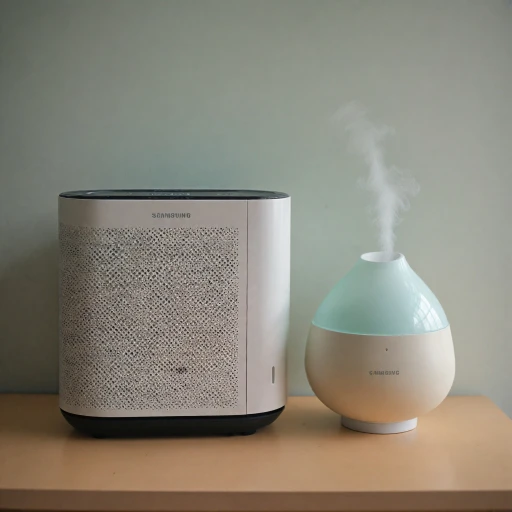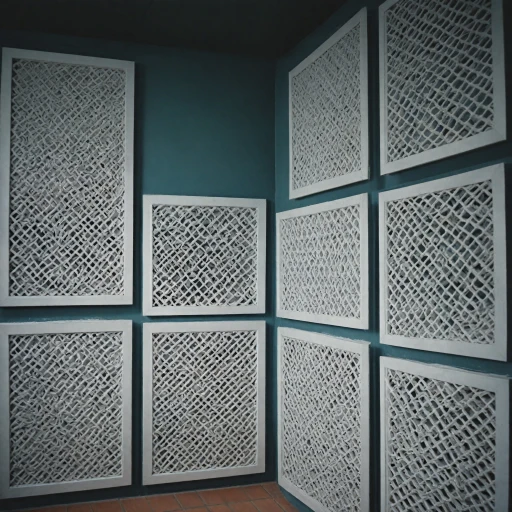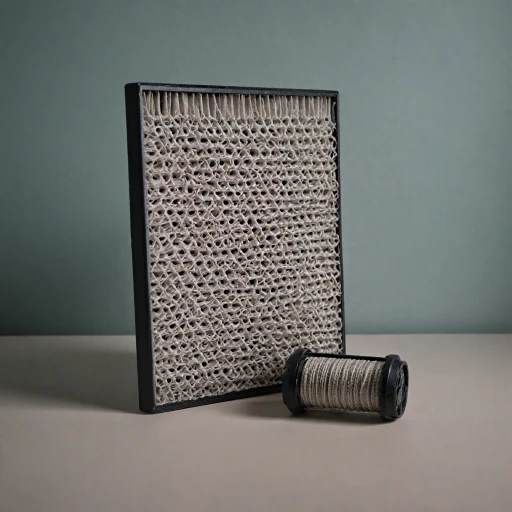Why Regular Filter Replacement Matters
Key Reasons to Change Your Air Purifier Filter Consistently
Changing the filter in your air purifier is not just recommended, it's essential to ensure its effectiveness. When you maintain your air purifier filter by replacing it regularly, you optimize the performance of the unit, prevent the circulation of harmful particles, and ultimately enhance indoor air quality.
Over time, filters accumulate particles and pollutants, such as dust, pollen, and even smoke. If a filter is clogged, it can't capture more contaminants, compromising the purity of the air that circulates in your space. This means that the purifier is working harder to circulate air, which could lead to long-term damage and inefficiencies.
Most air purifiers, including models like the Levoit Core series, offer a pre filter in addition to a HEPA filter. A true HEPA replacement filter is designed to capture up to 99.97% of small particles, while a carbon filter helps reduce odors and certain gaseous pollutants. However, these filters have a limited lifespan because of their active components which diminish over time.
Manufacturers typically suggest changing HEPA and carbon filters every few months — anywhere from 6 to 12 — depending on usage, the environment, and the specific filter type. Regular replacement not only sustains high air standards but also prevents the machine from working excessively, saving on energy costs.
Considering the price unit and long-term benefits, the investment in regular filter replacement can improve air quality significantly. To maintain your purifier's optimal performance, it's crucial to monitor signs that indicate a need for replacement and guard against undue stress on the unit. Moreover, maintaining your air purifier will ensure its longevity, preventing costly repairs or the need to purchase a new unit prematurely. For further insight, understanding the importance of regularly cleaning your air purifier's filter can also play a critical role in preserving its efficiency.
Signs It's Time to Replace Your Air Purifier Filter
Indications That Your Air Purifier Filter Needs Replacement
Understanding when to replace your air purifier filter is crucial. No one wants to compromise their indoor air quality by delaying a necessary filter change.- Decreased Airflow: If you notice that your purifier is not releasing as much air as it used to, it might be a sign that the filter is clogged and needs replacement. A filter loaded with particles can obstruct the airflow, reducing the efficiency of the unit.
- No Improvement in Air Quality: One of the primary purposes of an air purifier is to enhance air quality. If there isn’t any noticeable improvement, even after prolonged usage, the filter may be ineffective due to being at the end of its lifespan.
- Visible Dirt and Dust: Time to inspect! If you notice a significant amount of dust and dirt on the filter or pre-filter, it's a cue for a fresh replacement.
- Unpleasant Odor: Occasionally, the accumulation of particles can trap odors. If your unit starts to emit an unfavorable smell, it might be time for new filters, be they carbon or HEPA.
- Manufacturer's Recommendations: Read the instructions from your air purifier’s manual. Most manufacturers offer a timeline, usually ranging from 6 to 12 months, on when to replace the filters. This timeline considers the specific design, such as with renowned models like Levoit Core or Core Mini.
Types of Air Purifier Filters and Their Lifespan
Different Types of Filters and Their Expected Lifespan
Understanding the various types of air purifier filters is essential when considering a replacement. Each type has unique features and life expectancies, impacting how effectively your unit purifies your air. Below is an overview of the common filter types you'll encounter:- HEPA Filters: True HEPA filters are renowned for their ability to capture up to 99.97% of particles as small as 0.3 microns. Standard in many air purifiers, including the popular Levoit Core series, these filters typically require replacement every 6 to 12 months. Their precise filtration method ensures your air stays free from allergens and pollutants.
- Activated Carbon Filters: Often used alongside HEPA filters, carbon filters are excellent at absorbing odors, smoke, and volatile organic compounds (VOCs). The lifespan of a carbon filter ranges from 3 to 6 months, depending on usage intensity and air quality. These should be replaced regularly for optimal odor removal.
- Pre-Filters: Acting as a primary defense, pre-filters capture larger particles like hair and dust. While extending the life of primary filters, they require more frequent maintenance. Replacing or cleaning pre-filters every 3 months is advisable for effective performance.
- Other Specialized Filters: Some units include specialty filters, such as UV-C light filters or advanced molecular filters, targeting specific particles or pathogens. The replacement schedule can vary, so always read the manufacturer's instructions for these specialized components.
How to Choose the Right Replacement Filter
Selecting the Ideal Replacement for Your Air Purifier
When it comes to replacing your air purifier filter, choosing the right one is imperative to maintain optimal performance and ensure clean, fresh air in your living space. Here’s a step-by-step guide to help you make the best selection:
Identify Your Filter Type
Begin by determining the type of filter your air purifier uses. Common types include:
- HEPA Filters: True HEPA filters capture up to 99.97% of particles as small as 0.3 microns, including dust, pollen, and some bacteria. They're crucial for individuals sensitive to allergens.
- Carbon Filters: These filters are excellent at reducing odors and volatile organic compounds (VOCs) from the air due to their activated carbon made composition.
- Pre-Filters: Installed as the first line of defense, pre-filters capture larger particles and help extend the lifespan of HEPA filters.
Understand the Lifespan
Each type of filter has a different lifespan. Regularly check your unit’s manual to see how many months each filter type lasts and whether they come in a compatible pack. HEPA filters, for instance, may last around 12 months under regular use.
Consider the Unit Model
Ensure the replacement filter you purchase is compatible with your air purifier's model. For example, the Levoit Core Mini has specific replacement options that may differ from other models.
Price Evaluation
A good starting point is to look at the price range—check regular price versus sale price. Balancing cost with performance efficiency is key. Remember, investing in a higher-quality filter like a true HEPA filter can lead to long-term savings in air purifier efficiency and lifespan.
Quality Check
Reading user reviews and product specifications can provide insights into filter efficiency and durability. Make sure to read the details surrounding any guarantee or warranty provided with your replacement filter.
By following these steps, you ensure that your air purifier continues to function at its best. Remember, maintaining your air purifier is just as crucial, as this section highlights further guidance on the care needed to facilitate longevity for your unit.
Step-by-Step Guide to Replacing Your Air Purifier Filter
Effortless Filter Replacement Steps for Optimal Performance
Replacing your air purifier filter is crucial for maintaining a clean and healthy indoor environment. To ensure you get the best performance out of your unit, follow these simple steps:- Gather the Necessary Materials: Before you begin, make sure you have the appropriate replacement filter for your model. This could be a true HEPA filter, a carbon filter, or a combination pack, depending on your air purifier's specifications. Investing in the right type and size will directly impact efficiency.
- Turn Off and Unplug the Unit: Safety first! Always power off and unplug your air purifier before attempting to replace any filters. This prevents electrical mishaps and keeps you safe during the process.
- Access the Filter Compartment: Locate the filter compartment. This is typically accessed through the front or back panel of the purifier. Refer to your user manual if you're unsure.
- Remove the Old Filter: Carefully remove the old purifier filter. Be gentle to avoid spreading trapped particles back into the air.
- Install the New Replacement Filter: Take your new filter—whether it's a pre-filter or a true HEPA filter—and insert it in the same orientation as the old one. Make sure it fits snugly and check that the unit closes properly post-fitting.
- Reset the Filter Indicator: Many air purifiers have a filter indicator light that alerts you when it's time for a replacement. Once your new filter is in place, reset the indicator according to your model's instructions.
- Power Back On: Plug the unit back in, and turn on your air purifier. Confirm it's operating smoothly and listen for any unusual noises, which may indicate a misfit or obstruction.
Maintaining Your Air Purifier for Longevity
Enhance Efficiency with Regular Cleaning
To ensure your air purifier functions at its best, it’s crucial to perform regular maintenance. Start by routinely cleaning the pre filter, which traps larger particles before they reach the core filter. This not only prolongs the life of your hepa filter but also improves overall efficiency. While some pre filters are washable, others may require gentle vacuuming or brushing. Always refer to your specific unit's manual for detailed instructions.
Monitor Filter Lifespan
Keep an eye on the lifespan of your filters, including the true hepa and carbon filters. Each filter type has a different lifespan, often ranging from a few months to a year. Regularly check your purifier's indicators to know when a replacement is due. Tracking this ensures you don't lose out on the optimal performance of your air purifiers. Replacement packs are often available on sale, so take note of your supplier’s sale price and compare with the regular price for the best value.
Keep Your Unit Dust-Free
A key aspect of maintaining your air purifier is ensuring the unit itself remains dust-free. Wipe down exterior surfaces with a damp cloth on a regular basis to prevent the buildup of dust that can clog vents and hinder airflow.
Check for Wear and Tear
Regularly inspect your device for any signs of wear and tear. Examine the price unit and price regular components to ensure nothing requires immediate attention. If you notice abnormal sounds or decreased airflow, it might be necessary to perform a more thorough equipment evaluation.
Follow Manufacturer Guidelines
Always refer back to the manufacturer’s guidelines for specific maintenance instructions tailored to your purifier model. Brands like Levoit Core and Core Mini may have unique requirements that ensure longevity and efficiency. These practices will lead to reduced costs over time, as your initial investment in the air purifier yields maximum benefit.
